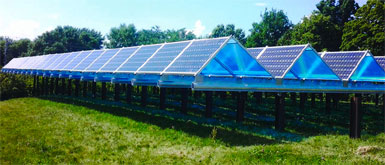Right after July 4, President Obama issued a raft of executive orders to celebrate America’s independence – this time from fossil fuels.
Building on the great success of solar in our country, he issued directives that make solar much more available to middle and lower-income households.
For people who live in federally-subsidized low income housing, he tripled the goal to 300 megawatts by 2020 (there is 185 MW now, exceeding his original 100 MW goal).
Key Initiatives:
- Affordable housing organizations will get direct technical assistance from the Department of Housing and Urban Development (HUD), and states will be encouraged to use Community Development Block Grants for efficiency and solar projects.
In response, public housing authorities and affordable housing providers across the country have committed to installing renewable energy on their facilities. NYC, for example, is about to get a $100 million energy efficiency lift – the largest ever for public housing. - Homeowners who get mortgages through the Federal Housing Administration will have flexible financing options for solar systems, and will be able to borrow up to $25,000 for efficiency upgrades and solar on second mortgages.
- National Community Solar Partnership: The Department of Energy (DOE), HUD, USDA and EPA will work with solar companies, NGOs, local communities and states to bring solar to renters and homeowners whose roof doesn’t allow for solar (half of US homes).
260 projects in over 20 states are already moving forward, such as: Nonprofit RE-volv’s goal is to finance 200 community solar projects in the next three years through a revolving solar fund; 30 rural electric coops in 17 states will install community solar by the end of next year; Clean Energy Collective is developing the first projects in Texas – big ones at 900 kilowatts and 1.2 MW; and utility NRG Energy’s in Massachusetts will be 1 MW. Hawaii, California, Vermont and other states are committed to advancing community solar, some focused specifically on low-income families.
- Philanthropic and impact investors, states, and cities have pledged $520 million to advance community solar and to scale solar and energy efficiency for low- and moderate- income households. Clean Energy Collective, for example, raised over $400 million to bring community solar nationwide!
Bringing solar to families that can’t afford electricity & heat, a great use of public funds: 
- Piggybacking on a recent announcement to train 75,000 people for solar jobs by 2020, and the "Solar Ready Vets Program," the White House also announced initiatives to bring solar jobs to low-income communities.
Read about last year’s directive on efficiency and renewable energy, and White House Mobilizes $4 Billion in Long-Term Renewable Energy Investments.
For details of Obama’s Executive Order, "Increase Solar Access for All Americans":
